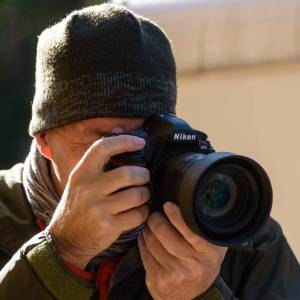Fan Clouds and New Growth
I often challenge the camera's ability to capture a scene, usually by choosing views where the light levels are beyond the dynamic range of the sensor. I'm a regular user of filters on the front of the lens to 'manage' the bright areas (usually sky) and I'd have to disagree with those Photoshop evangelists who tell you that it can be done in post processing. If the sensor can't capture detail in the highlight and shadow areas of an image, nothing in Photoshop will bring it back.
It is somewhat more difficult when your lens doesn't allow you to fit filters to the front element, which was the case today. I needed something with an ultra wide angle to capture this scene, so put the 7-14mm lens on the camera (equates to a 14-28mm for full frame shooters). In these circumstances I usually resort to HDR, which was the case with this image. I try really hard not to end up with a result which is not believable. That usually means darkening some areas of the image, and lightening others to create something more along the lines of what the eye saw. And that is a conundrum; it requires my memory of the scene to be factored in to the end result. This isn't far off, but even as I was taking it I realised how quickly my eye was adjusting to the different light levels as I scanned the view, picking out detail. It is often suggested that you squint when looking at the scene you intend to photograph as it gives you a very good impression of the tonal range.
Technical: 5 shots, 1 stop apart, processed in Nik HDR Efex Pro (Balanced preset). Brought back into Lightroom and use of the gradient tool to darken the foreground and the tree. Some desaturation (the plugin always seems to make the greens more vivid than they should be). Sharpened and output for uploading.

Comments
Sign in or get an account to comment.


